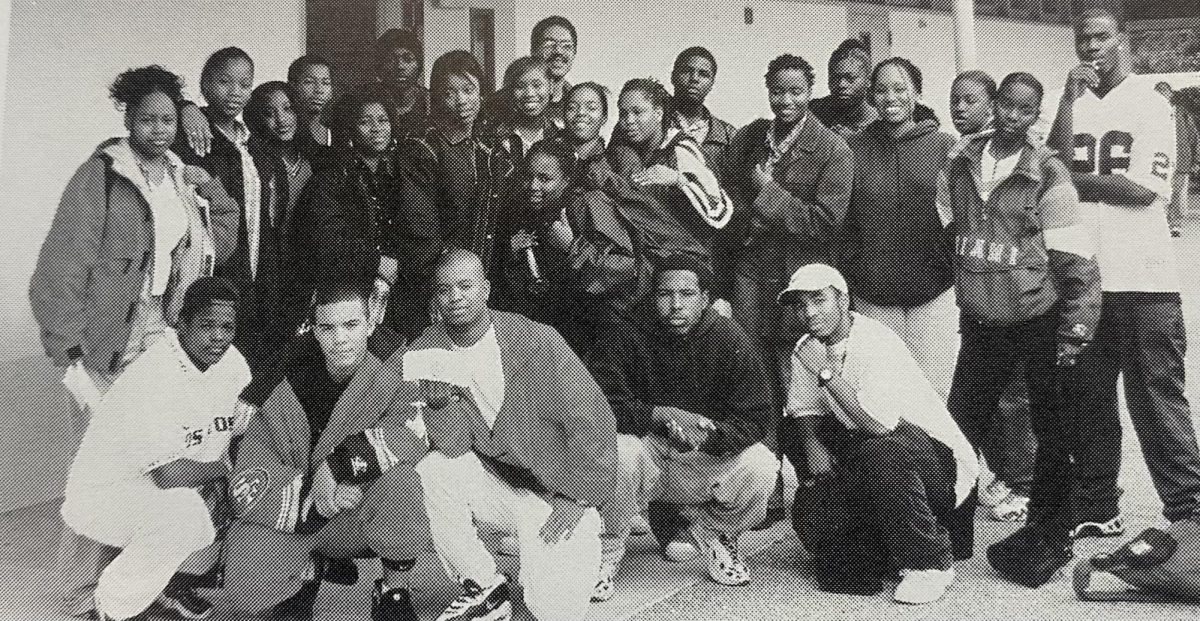An Evolving Beauty
It is 1510 in the southern streets of the Italian city of Florence and the Renaissance is in full bloom. There are festivals in the streets and the trending fashions are broad shoulders, puffed shirts and a pale complexion–now only pictures that students glance over in their textbooks.
Five centuries later, the concept of beauty has drastically evolved along with society. For teenagers, abiding by such social norms is a large part of adolescence, whether people feel comfortable discussing it or not.
“If I could have what I’d think is the perfect body, it would be toned, skinny legs, a flat stomach with toned abs, a nice round butt, nice boobs and flawless skin,” sophomore Anna Martirosyan said.
The standard of maintaining an acceptable body image extends to men as well.
“For guys, you don’t have to be super fit, but you shouldn’t be overweight and you shouldn’t be a stick either,” sophomore Mehr Singh said. “So a good medium.”
One development in the 21st century is that race seems to have become a changing factor in determining beauty. In 1939, research scientist Dr. Kenneth Clark and his wife conducted an experiment involving two different Barbie dolls. He discovered that when he handed young children of different races both a black and a white Barbie doll, an overwhelming two thirds majority of both races chose to keep the pale faced, blonde haired, blue-eyed Barbie as the one they wanted to play with.
Now a study down by Allure Magazine with an older audience has shown a change from the 1939 results. According to their research survey, 64% of those surveyed found mixed race the epitome of beauty. In addition, of those who wished to change their skin color, 70% wanted “darker skin and fuller lips,” a far cry from that of the past. Yet it is a matter of opinion on whether this soceital shift has been an improvement or not.
Futhermore, this idealistic conception of human appearance doesn’t extend to all people. Some high school students consider the idea of an “ideal body image” to be a social construct that has no actual meaning or practical applicability. Instead, students are striving to be comfortable with themselves.
“The ideal body is different for every person in that the individual should feel comfortable and healthy in their own skin,” junior Amanda Choy said.
While Amanda believes that self-acceptance is more important than an ideal body image, she does recognize that, at times, people feel pressured to conform to the lifestyles and appearances depicted in the media.
“I don’t think there’s anyone who doesn’t to any degree feel that way,” Amanda said.
For a school project, Amanda focused on body image and eating disorders.
“We researched eating disorders like anorexia and bulimia, and we also tried to get to the root of the problem,” Amanda said. “Most of the time we found that the media is what plays the largest role in that kind of unhealthy mindset of an ideal look, weight and body.”
Other students have similar views to Amanda’s understanding of a different body type for each person.
“I don’t think there is an ideal body because everyone has a different body type,” sophomore Reyes Maldonado said. “Some people have thick legs and a slim waist and others are just a bit heavier, and then there is everything in between.”
The Media Impact
In today’s society, the mass media’s use of models that are well underweight is analogous to the capitalistic belief of never being too rich – women can never be too thin. Fashion shows, posters, and models project the image that for a woman to be happy with her body image, she must be unhealthy. This winter, the Victoria’s Secret fashion show brought awe and inner-discontentment to viewers, setting unrealistic standards for women. Retailers have pushed this body image, introducing vanity sizing, such as 0 or 00, to reward women who push their bodies to the absolute limit in order to look “sexy.”
Not all models are naturally thin, either. Photoshop has become so widely-used in the beauty industry that it is almost impossible to discern the true frames of models. As a result, their computer-altered physiques look like they can be naturally attained.
“We all know the models are photoshopped, but that’s all we’ve been exposed to on TV and in magazines,” senior Sydney Carr said. “It’s hard not to think that if you don’t look like the women in those pictures then you’re too fat, not pretty enough, or whatever.”
Cara Delevingne, voted Model of the Year at the British Fashion Awards, is 5’10’’ and weighs 129 pounds. According to Health Discovery, she is also underweight for a woman with such a small frame. Even though Delevingne has had many successes in her career, the general population still focuses only on her body instead of her accomplishments. She set out to be a fashion model, not a role model: there is a Twitter account dedicated to Delevingne’s “thigh gap,” referencing how her legs are so skinny that they do not touch, something natural for most women.
“Now, we all know that bodies come in different shapes and sizes and there’s nothing wrong with calling a certain body type beautiful, but it’s the fact that the media often fails to recognize other physiques as desirable that make it so corrupt,” Madelyn said.
Delevingne is said to be the next Kate Moss, the poster model featured in Calvin Klein’s controversial fashion style called Heroin Chic, characterized by pale skin and dark circles under the eyes. The style itself was a reaction to the healthy and vibrant look of models at the time, and mimicked the physical stature of heroin addicts. Under the Heroin Chic campaign, heroin use was practically glamorized. It’s these types of “role models” that inevitably end up influencing the next generation.
According to a study by Westminster College, less than 5 percent of women in the world have a body type represented in the media, a number that is rising because of women’s attempts to fit an impossible mold.
The misconception of a healthy body is not limited to the fashion industry—it extends through all forms of media: television shows, movies and newscasting. Female stars almost exclusively have thin or underweight bodies and television shows like “The Hills,” “The OC,” etc. all have actresses that portray the tall and thin ideal woman. Even reality shows make the skinny seem normal.
“Celebrities live a plastic life,” Sydney said.
Do the Ends Justify the Means?
Media and societal pressures can help to propagate an ideal body image, but what are the consequences when students go to extremes to conform to these expectations? The two prevalent eating disorders in our society today, anorexia and bulimia, show the extremes that students go to meet the ideal body image. Those with anorexia eat minimal amounts of food to maintain a skinny body, while those with bulimia continue to eat food, but purge because they fear the additional calories.
There is not always a single moment that convinces a person to become anorexic or bulimic, but instead it is a build-up of various pressures. In Michelle’s case, the pressure from the media to meet a certain image started her anorexia, and bullying and peer pressure only worsened her situation.
“Often times it is not just looking at thin actresses that cause eating disorders,” Michelle said. “There is often a lot of indirect peer pressure and in some cases bullying. I was personally bullied and if I had not been called Moby Dick every day I came to school I may not have thought so little of myself.”
Stress from middle school only intensified during high school, and Michelle reacted by seeking control over the one thing she felt she could: her body image.
“The idea of control through your eating disorder is that the other things in your life aren’t in your control and you feel as if you need to make up for the out of control factors in your life,” Michelle said. “When you take control of your body and your looks, you feel empowered and in control of something in an otherwise crazy world.”
Even though Michelle found more support systems in high school, she found herself both purging and eating smaller portions of food.
“The huge change of entering high school did not help,” Michelle said. “Although I had gained a new support system through marching band, there was still so many new stressers. When you feel stressed and vulnerable, all you want is control. Control becomes essential to your very existence. And what is the easiest to control about your life? Your body and the way you look.”
Like many students suffering from eating disorders, Michelle faced difficulties with acknowledging that she had a problem.
“Everyone always jokes the first step to recovering is admitting you have a problem, but no one realizes how true this is until they go through it themselves,” Michelle said. “The scary thing about eating disorders is the fact that many who suffer from them refuse to admit it to themselves. They deny it and get extremely offended when you insinuate that they might have a problem. There’s nothing wrong about caring about your weight and your dieting habits; it’s when it becomes your obsession and you lose sleep over it that it has become a real problem.”
Michelle started to feel isolated from her friends and family by these actions, realizing she had not only harmed herself but those she cared the most about as well. Now, Michelle believes that telling her own story may benefit others who are currently experiencing the same emotional pains.
“Of course I know people who suffer just as I do, but I have never had the guts to talk to them about it,” Michelle said. “I felt so alone when I was recovering and I don’t want others to have to go through that. I hope that my honesty and experience will reach someone out there who is suffering just as I did. I want them to know they aren’t alone and that life is so much happier when you learn to love yourself.”
Going through an average day now is much easier and happier for Michelle than it was two years ago.
“By the end of the school day a couple years ago I would be so emotionally drained that I would go home and cry uncontrollably for hours. I remember very specifically that the same night Bin Laden was shot by the navy seals, I was in my sister’a room having a panic attack and crying uncontrollably,” Michelle said.
Yet while Michelle is already in the process of recovering, Tiffany began her own struggle against bulimia last year during winter break. She has purged nearly every day since.
“At this point I think I have being doing this for a year — a little over a year — and it’s just something that I do,” Tiffany said. “It’s not that I feel the need to continue, it’s just the fact that I don’t need to stop.
Tiffany purges as a means of coping with the stresses she encounters in life. From her perspective, it provides her with a way to alleviate the anxiety of her day-to-day life.
“Most of the pressure I put on myself… I see it more as a coping mechanism,” Tiffany said. “When you eat and then you purge, you aren’t thinking. It takes your mind off things.”
Even though Tiffany originally purged as a method for coping, continuing with her bulimia has caused problems with her self-perception. Over time, she has increasingly come to despise the feeling of food in her stomach because she fears gaining the weight and calories.
“[I feel bad] about it all the time because you can never get all the food out,” Tiffany said. “It just feels gross inside you… I guess you don’t feel any better, you just don’t feel as bad… Sometimes even when I’m not hungry I will still binge for the sake of doing so.”
Tiffany has faced both emotional and health consequences from her struggle with bulimia. From repeated and regular purging, she has suffered its multiple harmful side effects over the course of a year.
“Well, sometimes my throat bleeds,” Tiffany said. “I lose my gag reflex… And sometimes I can’t speak because it’s that bad. And there’s a lot of emotional turmoil when you can’t get [the food] all out. It’s impossible to get all [the food] out. And then when you binge and fall asleep for 18 hours, that’s bad.”
As Michelle said, the first step to recovery is realizing the presence of a problem and the next step is wanting to change. However, Tiffany chooses not to stop because she does not see harmful consequences of bulimia on her life. She has been purging for so long that these actions and their subsequent effects have become normal from her perspective.
“I talked to one of my teachers about it and she said to let her know if I wanted help because therapy only works if I want to change — but I don’t,” Tiffany said.
Yet Michelle believes that the longer someone continues with these actions, the more dangerous anorexia and bulimia can become. From her perspective, that one element of the recovery process that can help everyone suffering is education on the subject. Not only is it important for those experiencing anorexia or bulimia, but for society as a whole.
“As little kids we think nothing of what others are eating, unless someone has a yummy dessert than us,” Michelle said. “But in middle school things start to change. And especially in the girl world, you start getting judged for the amount of food you eat. Too much food and you’re a ‘fatty,’ and too little you’re automatically labeled anorexic. These words are just thrown around without thinking twice about the ramifications.”







